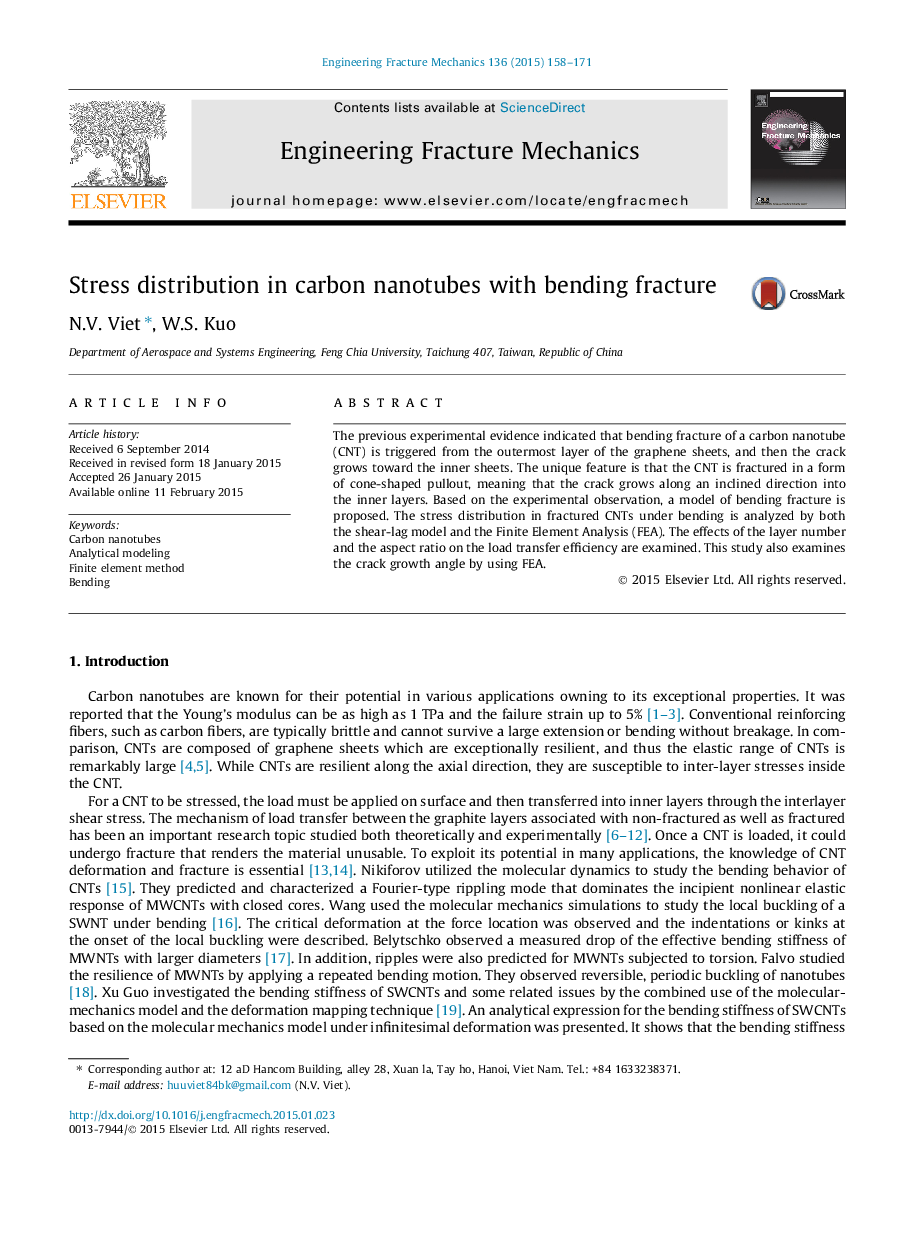| Article ID | Journal | Published Year | Pages | File Type |
|---|---|---|---|---|
| 770407 | Engineering Fracture Mechanics | 2015 | 14 Pages |
•A model of bending fracture is proposed based on the experimental observation.•The stress transfer within the graphene layers under bending is analyzed by both the shear-lag model and the Finite Element Analysis (FEA).•The effects of the layer number and the aspect ratio (AR) on the load transfer efficiency are examined.
The previous experimental evidence indicated that bending fracture of a carbon nanotube (CNT) is triggered from the outermost layer of the graphene sheets, and then the crack grows toward the inner sheets. The unique feature is that the CNT is fractured in a form of cone-shaped pullout, meaning that the crack grows along an inclined direction into the inner layers. Based on the experimental observation, a model of bending fracture is proposed. The stress distribution in fractured CNTs under bending is analyzed by both the shear-lag model and the Finite Element Analysis (FEA). The effects of the layer number and the aspect ratio on the load transfer efficiency are examined. This study also examines the crack growth angle by using FEA.
